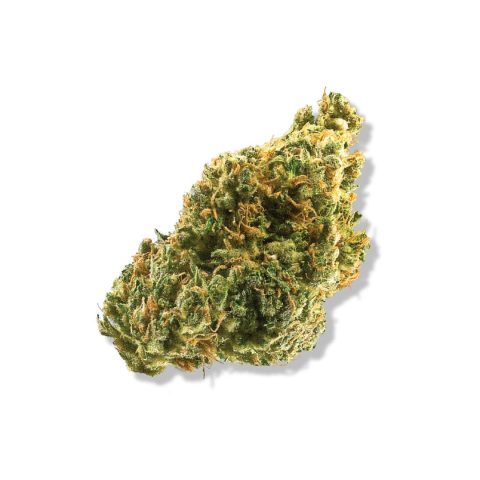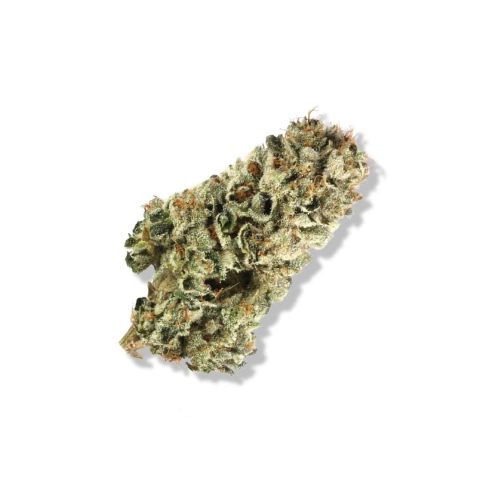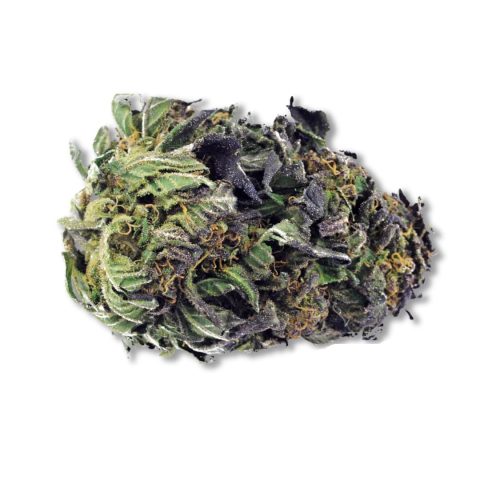Cherry Pie can also help with appetite loss. It may increase hunger, which is good for those who can’t eat well. This includes people with cancer or eating disorders.
Lastly, Cherry Pie can help with insomnia. It helps you relax and sleep better. This makes it a natural option for those with sleep problems.
The medical cannabis field is always growing, and Cherry Pie is a key part of it. Its many benefits make it a valuable option for those looking for natural health solutions.

Recreational Effects and User Experience
Trying the Cherry Pie weed strain is a unique experience for many. It starts to work quickly, making users feel euphoria and relaxation in minutes. As it goes on, it boosts creativity and focus.
Cherry Pie also affects the body in a good way. People say it gives a nice body high that makes them feel calm and happy. This mix of mental and physical effects makes it a favorite for fun use.
Onset and Duration
Cherry Pie’s effects start fast, hitting users in 10-15 minutes. The high lasts about 2-4 hours, giving a long and enjoyable experience.
Mental Effects
- Euphoric and uplifting mood
- Enhanced creativity and focus
- Increased sense of relaxation and calmness
Physical Sensations
- The soothing and comforting body high
- Increased feelings of relaxation and physical well-being
- Potential for mild sedation and couch-lock in higher doses
Cherry Pie offers a great mix of mental and physical effects. It’s a top pick for those looking for a fun and balanced high.
Optimal Growing Conditions
To grow the famous Cherry Pie weed strain, you need to know the right growing conditions. Whether you grow it indoors or outdoors, knowing the best climate, lighting, and soil is key. This will help you get a great harvest.
Indoor Cultivation
Indoor growers should keep the temperature between 70-85°F (21-29°C) and humidity at 50-60%. Good climate control is vital for the best environment. Cherry Pie also needs a balanced light schedule. It needs 18-24 hours of light a day during the veg stage 12 hours of light and 12 hours of dark during the flower stage.
Outdoor Growing
For outdoor growing, Cherry Pie loves a Mediterranean climate with warm days and cool nights. It needs well-draining, nutrient-rich soil with a pH of 6.0-7.0. Outdoor growers should watch the local climate and make sure their plants get enough sunlight.
| Growing Condition |
Indoor Cultivation |
Outdoor Growing |
| Temperature |
70-85°F (21-29°C) |
Warm days, cool nights |
| Humidity |
50-60% |
Moderate |
| Lighting |
18-24 hours direct light |
Ample sunlight exposure |
| Soil |
Well-draining, nutrient-rich |
Well-draining, pH 6.0-7.0 |
Following these growing conditions will help you get the best yield and quality of Cherry Pie weed. Whether you grow it indoors or outdoors, these tips will help.
Indoor Cultivation Techniques
Growing Cherry Pie weed indoors needs careful attention to the growing environment. It’s important to optimize lighting, control temperature, and manage humidity levels. These factors are crucial for a healthy indoor cannabis garden.
Light Requirements
Cherry Pie needs specific light schedules to grow and flower. It should get 18-24 hours of strong grow lights while growing. Then, it needs 12 hours of light when it’s flowering.
Growers often use HID lamps like metal halide (MH) and high-pressure sodium (HPS). These grow lights give the right spectrum and intensity for strong growth and buds.
Temperature Control
Cherry Pie grows best in temperatures between 68-78°F (20-26°C) during the day. At night, it prefers 58-68°F (14-20°C). Keeping climate control right is key for healthy plants and good terpene production. Growers should use ventilation systems and coolers to keep the environment stable and comfortable.
Humidity Management
Cherry Pie needs the right humidity levels to grow well. The best range is 40-60% relative humidity (RH). Growers can use hydroponics systems and dehumidifiers to keep the moisture right. This prevents mold, mildew, and nutrient lockout.
| Parameter |
Optimal Range |
| Lighting |
18-24 hours (vegetative), 12 hours (flowering) |
| Temperature |
68-78°F (20-26°C) day, 58-68°F (14-20°C) night |
| Humidity |
40-60% relative humidity |
By carefully managing these environmental factors, growers can create the best conditions for indoor Cherry Pie cultivation. This ensures a rich and flavorful harvest.
A modern indoor cannabis cultivation setup showcasing vibrant grow lights, illuminating lush green Cherry Pie Cannabis Outdoor Growing Considerations
Growing Cherry Pie weed outdoors can be rewarding but comes with challenges. Growers must think about sunlight exposure, natural soil, pest control, and weather protection to succeed.
Optimal Sunlight Exposure
Cherry Pie loves lots of sunlight exposure. Choose a spot that gets at least 6 hours of direct sun daily. For the best growth, aim for 8-10 hours of sun.
Placing plants to get the most sunlight exposure boosts potency and terpene levels.
Natural Soil Conditions
Cherry Pie grows well in well-draining, nutrient-rich natural soil. Add organic matter like compost to enrich the soil. Keep the soil pH between 6.0 and 7.0 for best nutrient uptake.
Pest Control Strategies
- Check plants often for pests like aphids, spider mites, or caterpillars.
- Use natural pest control, like beneficial insects or neem oil, to fight pests without harming plants.
- Ensure good airflow to prevent pests and diseases from building up.
Weather Protection
Outdoor Cherry Pie plants need protection from harsh weather conditions. Use greenhouses, hoop houses, or shelters to keep plants safe and growing well.
By focusing on these outdoor growing factors, growers can get a great harvest of Cherry Pie weed. This ensures the plants stay healthy and strong.
Harvest Timeline and Indicators
Growing the perfect Cherry Pie weed strain needs a good understanding of its growth and harvest signs. From the start of flowering time to the best trichome maturity and bud density, growers must watch their plants closely. This ensures a successful harvest window.
Growth Phases
The Cherry Pie plant starts with a 4-6 week vegetative phase, then blooms for 8-10 weeks. Growers should keep an eye on the plant’s growth. They should watch for trichome development and bud density.
Yield Expectations
With the right care and conditions, Cherry Pie plants can produce 400-600 grams per square meter indoors. Or 500-800 grams per plant outdoors. The trichome maturity and bud density greatly affect the harvest’s quality and potency.
Harvesting Signs
- Trichomes: When most trichomes turn from clear to milky white, it’s time to harvest. This shows peak trichome maturity.
- Pistils: The white pistils curl and turn reddish-brown. This signals the end of flowering time.
- Leaves: The sugar leaves around the buds turn yellow and fade. This is a clear sign of the optimal harvest window.
By watching these signs, growers can harvest their Cherry Pie plants at the best time. This maximizes the bud density and potency of this popular strain.
Common Growing Challenges and Solutions
Growing Cherry Pie weed can be rewarding but comes with challenges. Growers must watch out for nutrient deficiencies, pest infestations, mold prevention, and keeping the pH balance right.
Nutrient deficiencies are a big problem with Cherry Pie. They can cause stunted growth, discolored leaves, and poor buds. To fix this, growers should check the plant’s nutrient levels often. They also need to keep the pH right so the plant can absorb nutrients well.
- Regularly test the soil or growing medium’s pH and adjust as needed to maintain an optimal range of 6.0-6.5.
- Supplement with the appropriate nutrient solutions to address any deficiencies, such as nitrogen, phosphorus, or potassium.
- Implement a feeding schedule that provides the plant with a balanced and adequate supply of essential nutrients throughout its life cycle.
Pests like spider mites, aphids, and thrips can harm Cherry Pie plants. These pests can damage leaves and buds. Growers should check their plants often and use natural pest control or insecticides to prevent and manage pests.
Mold and mildew are also concerns, especially in humid places. To stop these problems, growers need good airflow, the right temperature and humidity, and might use fungicides or other mold prevention methods.
“Addressing these common growing challenges is crucial for achieving a bountiful and high-quality Cherry Pie harvest.”
By being careful, using the right solutions, and adjusting their growing methods, Cherry Pie growers can beat these challenges. This way, they can have successful and rewarding growth.
Post-Harvest Processing and Curing
Proper handling after harvest is key to keeping Cherry Pie’s flavor and aroma. This part covers drying, curing, and storage tips. These steps help you enjoy your harvest to the fullest.
Drying Methods
Slow drying is vital to keep Cherry Pie’s terpenes and oils. Hang-drying in a controlled climate with the right humidity control works well. Or, use airtight containers for slow drying to preserve its qualities.
Curing Techniques
- After drying, curing starts. It’s important for Cherry Pie’s full flavor and aroma.
- Put dried flowers in airtight containers like glass jars or opaque bags. This helps with terpene preservation.
- Open the containers a bit to let air in while keeping the humidity right.
- Let them cure for weeks to get the best taste, smell, and potency.
Storage Tips
After drying and curing, store Cherry Pie buds well. Use airtight containers in a cool, dark spot. Keep humidity control consistent to protect the terpene profile.
By using these drying, curing, and storage methods, your Cherry Pie will stay flavorful and potent. Enjoy every moment of this legendary strain.
Potential Side Effects and Precautions
The Cherry Pie strain has many benefits, but it’s good to know about possible side effects. It’s important to use it responsibly to enjoy it safely and well.
Dry mouth is a common side effect. Drinking water can help. Red eyes can be fixed with eye drops or sunglasses.
Some people might feel paranoia or anxiety, especially with more of it. Start with a small amount and slowly increase it. This way, you can avoid bad reactions.
Following dosage recommendations is key. Beginners should start small and wait for the effects. Experienced users should also be careful and know their limits.
“Responsible consumption is key to enjoying the strain safely and effectively.”
Knowing about side effects and taking precautions can help you enjoy Cherry Pie more. Everyone reacts differently, so listen to your body and adjust as needed.
Legal Status and Availability
The Cherry Pie weed strain has a complex legal status. Medical marijuana and recreational cannabis laws differ across regions. It’s widely available in states where legalization has been approved but is hard to find in places with strict cannabis policies.
In the United States, you can find Cherry Pie in dispensaries of states that allow medical marijuana and recreational cannabis. Places like California, Colorado, Oregon, and Washington have it. But, in states with strict laws, getting this strain can be tough.
| State |
Legal Status |
Availability |
| California |
Medical and Recreational |
Widely available in dispensaries |
| Colorado |
Medical and Recreational |
Widely available in dispensaries |
| Oregon |
Medical and Recreational |
Widely available in dispensaries |
| Washington |
Medical and Recreational |
Widely available in dispensaries |
| Texas |
Medical Only |
Limited availability in select medical dispensaries |
| Florida |
Medical Only |
Limited availability in select medical dispensaries |
It’s key to know the legal status and availability of Cherry Pie in your area. Keeping up with changing cannabis laws is important for safe and legal use.
Similar Strains and Alternatives
If you’re looking for something like Cherry Pie, there are many options. Cherry Kush and Black Cherry Pie are just a few. They all have unique flavors and effects for those who love cannabis.
Comparable Indica Hybrids
- Girl Scout Cookies: This mix of Durban Poison and OG Kush is well-loved. It has a sweet, earthy taste and a balanced high.
- Cherry AK-47: It combines AK-47’s brain-boosting effects with a fruity cherry taste.
- Grape Ape: Known for its calming effects and grape flavor, it’s a favorite among indica fans.
Related Cherry Variants
For those who love cherry flavors, there are many strains to try:
- Black Cherry Pie: This strain has a dark cherry smell and a relaxing high.
- Cherry Limeade: It’s a mix of tart lime and sweet cherry, offering a refreshing vibe.
- Cherry Diesel: It has a strong diesel smell with a hint of cherry. It’s known for its energizing effects.
| Strain |
Lineage |
Dominant Terpenes |
Effects |
| Girl Scout Cookies |
Durban Poison x OG Kush |
Limonene, Caryophyllene, Myrcene |
Balanced, Relaxing, Euphoric |
| Cherry AK-47 |
AK-47 x Cherry Phenotype |
Linalool, Limonene, Myrcene |
Cerebral, Relaxing, Uplifting |
| Grape Ape |
Mendocino Purps x Skunk x Afghanistan |
Myrcene, Caryophyllene, Linalool |
Calming, Full-body, Sedative |
| Black Cherry Pie |
Black Cherry Pie Phenotype |
Linalool, Limonene, Myrcene |
Relaxing, Euphoric, Sedative |
| Cherry Limeade |
Cherry Phenotype x Limeade |
Limonene, Linalool, Myrcene |
Uplifting, Energizing, Refreshing |
| Cherry Diesel |
Sour Diesel x Cherry Phenotype |
Caryophyllene, Limonene, Myrcene |
Cerebral, Energizing, Pungent |
Looking for something like Cherry Pie? These strains offer a variety of options. They’re perfect for those who want to try new things in the cannabis world.
Cherry Pie is a versatile strain that perfectly balances relaxation and euphoria, making it a favorite among both recreational and medical cannabis users. Its rich genetic lineage, distinct flavor profile, and therapeutic benefits set it apart as a strain worth exploring. Whether you’re looking to unwind after a stressful day, spark creativity, or find relief from chronic ailments, Cherry Pie delivers a consistent and enjoyable experience.
Beyond its effects, Cherry Pie stands out for its stunning appearance and sweet aroma, reminiscent of freshly baked desserts. Growers also appreciate its resilience and moderate yields, making it a rewarding choice for cultivation.
If you’re ready to experience the magic of Cherry Pie firsthand, Jah Livity has you covered. Our carefully curated collection ensures you receive only the finest Cherry Pie products to elevate your cannabis journey. From high-quality buds to accessories, everything you need is just a click away.
Don’t miss out on this exceptional strain! Visit www.jahlivity.com/shop today and discover why Cherry Pie continues to be a top choice among cannabis enthusiasts.
FAQ
What is the genetic lineage and heritage of the Cherry Pie weed strain?
Cherry Pie is an Indica-dominant hybrid strain born from the legendary genetics of Granddaddy Purple and Durban Poison, two powerhouse strains in the cannabis world. Granddaddy Purple contributes its deeply relaxing, sedative qualities, along with its signature grape and berry flavors, while Durban Poison brings sharp cerebral energy and uplifting effects, paired with its spicy, sweet aroma. The result is a well-balanced hybrid that combines the best of both parent strains. Cherry Pie offers a harmonious blend of physical relaxation and mental euphoria, making it suitable for both daytime and evening use, depending on the dosage. Its versatile effects can calm stress and tension while enhancing mood and creativity, providing a balanced experience that appeals to recreational and medical users alike.
What is the terpene profile and cannabinoid composition of Cherry Pie?
Cherry Pie features a rich terpene profile dominated by myrcene, caryophyllene, and limonene. Myrcene contributes to its calming effects and enhances its earthy, herbal undertones. Caryophyllene, a terpene also found in spices like black pepper, adds a hint of spiciness and is known for its potential anti-inflammatory benefits. Limonene, responsible for its bright citrus notes, balances the flavor with a refreshing zing and is often associated with mood-enhancing properties. This combination of terpenes gives Cherry Pie its signature sweet cherry aroma and fruity flavor, with subtle layers of earthiness and spice.
In addition to its delightful terpene profile, Cherry Pie boasts THC levels that can reach up to 25%, making it a potent strain that delivers strong effects. Its high THC content contributes to its ability to provide a balanced blend of cerebral euphoria and physical relaxation, appealing to both recreational and medical cannabis users seeking powerful relief or an uplifting experience.
What are the physical characteristics and appearance of Cherry Pie buds?
Cherry Pie buds are dense and round. They have a bright purple color and orange pistils. The buds are covered in trichomes, making them look frosty and high-quality.
What are the potential therapeutic benefits of the Cherry Pie strain?
Cherry Pie helps with chronic pain, stress, appetite loss, and insomnia. It’s a favorite among medical cannabis users for its balanced effects.
What are the typical recreational effects and user experience with Cherry Pie?
Cherry Pie gives a euphoric and uplifting high. It also relaxes the body deeply. Users enjoy increased creativity and a good mood, along with a body high.
What are the optimal growing conditions for cultivating Cherry Pie?
Cherry Pie grows well indoors and outdoors. It likes warm climates, moderate humidity, and good soil. Growers need to control temperature, light, and moisture for success.
What are the common growing challenges and solutions for Cherry Pie?
Cultivating Cherry Pie can present challenges like pests, mold, and nutrient deficiencies, which can hinder plant growth and reduce yield quality. Pests such as spider mites, aphids, and whiteflies are common threats to cannabis plants. To manage these pests, growers should implement integrated pest management (IPM) techniques, including introducing beneficial insects like ladybugs, using organic pesticides, and maintaining a clean growing environment to prevent infestations.
Mold and mildew, particularly powdery mildew and bud rot, can thrive in humid conditions. Controlling humidity levels, especially during flowering, is essential to prevent these issues. Use dehumidifiers in indoor setups, ensure proper air circulation with fans, and avoid overwatering to keep the environment dry enough to inhibit mold growth.
What are the potential side effects and precautions associated with using Cherry Pie?
Common side effects of using Cherry Pie include dry mouth (cottonmouth) and red eyes, both of which are typical with cannabis use and can be managed easily. Staying hydrated before, during, and after use can help alleviate dry mouth while using lubricating eye drops can relieve redness and dryness in the eyes.
In some cases, Cherry Pie may cause heightened anxiety or paranoia, especially for users who are sensitive to THC or consume higher doses than their tolerance allows. These effects can be more pronounced in individuals prone to anxiety or those new to cannabis. To minimize the risk of these adverse effects, it’s important to start with a low dose and gradually increase the amount only as needed.











